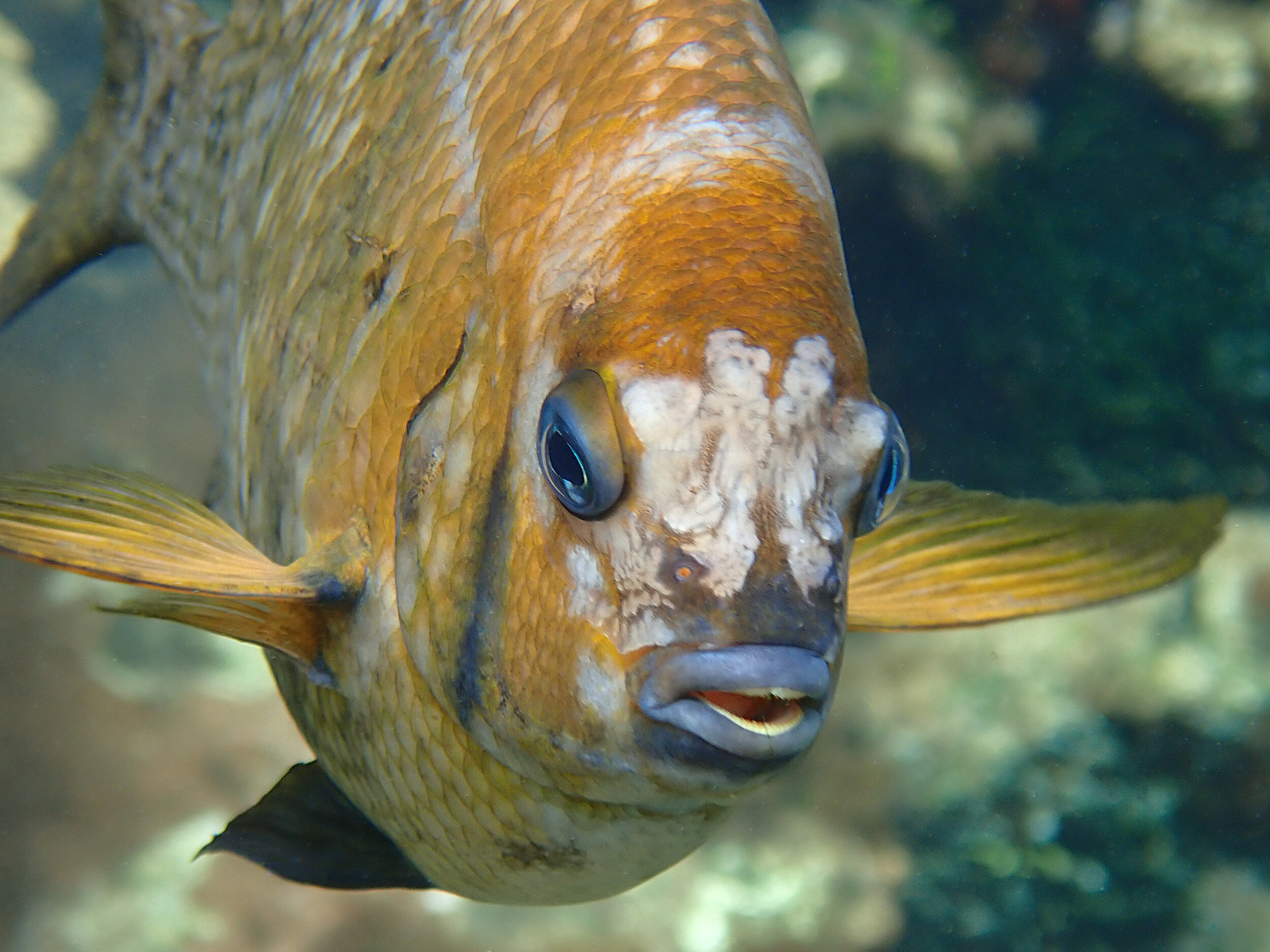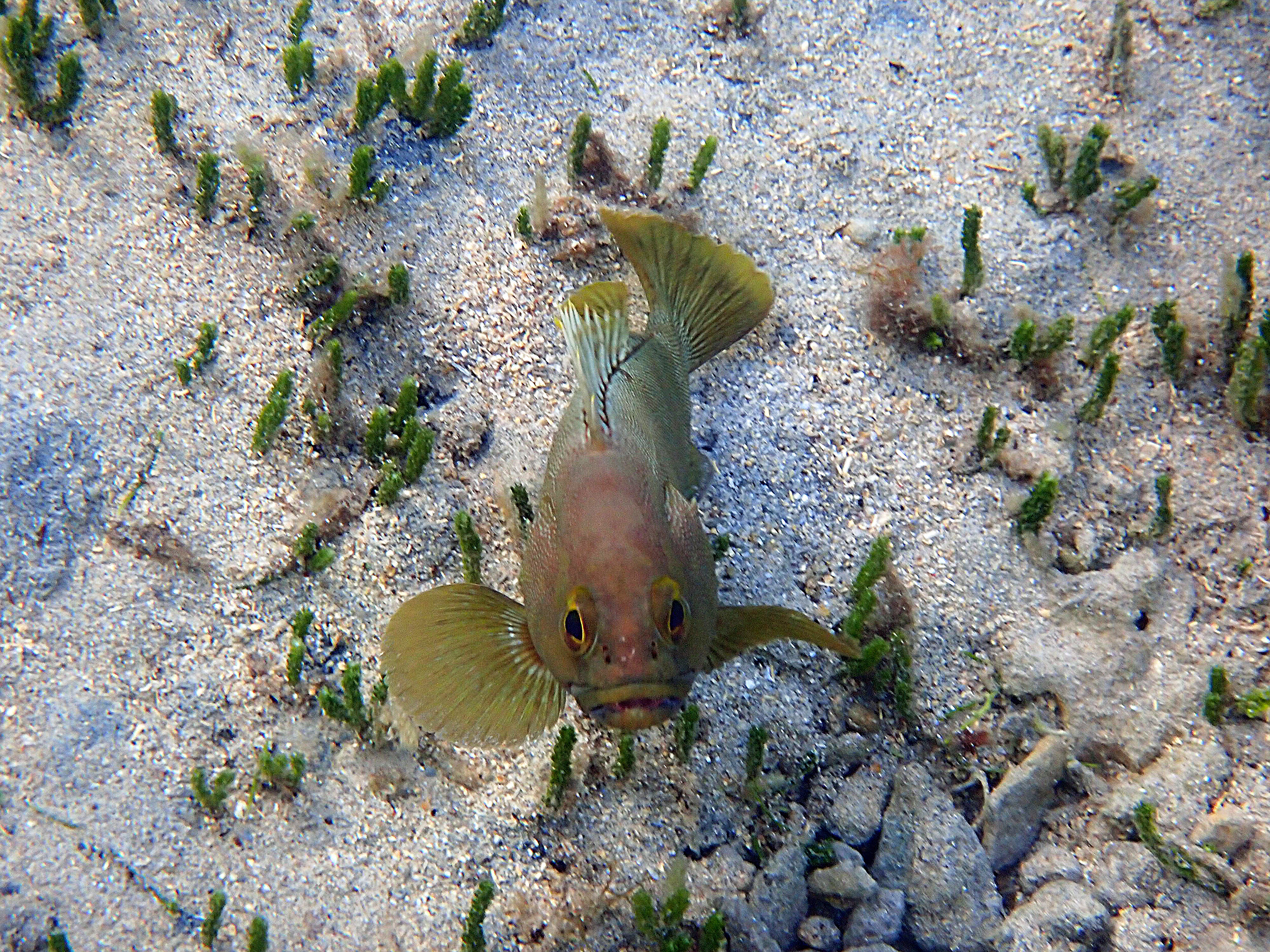Attracted by the easy pickings, I then watched as the silver trevally – Pseudocaranx sp 'dentex' – arrived. Like a sleek pack of wolves they swept around, in and out of the drum scooping up whatever they could. The fry shrank back, huddling together, trying to stay out of the maelstrom and away from so many hungry mouths.
Read MoreUnderwater wars! Aatuti versus the elegant wrasse
The banded scalyfin damselfish are keen underwater gardeners who don't take kindly to their carefully tended and guarded patches being raided by schools of elegant wrasse.
Read MorePhotographed in Cemetery Bay
Goniopora norfolkensis – an uncommon coral
A reasonably common coral here is this beautiful brown, but sometimes creamy or caramel coloured fronded species called Goniopora norfolkensis..
Read MoreHalfmoon grouper - Epinephelus rivulatus
Close encounter with a halfmoon grouper
A close encounter with a halfmoon grouper causes an amazing transformation from mottled red to mustard yellow.
Read MoreNorfolk Island blenny, Parablennius serratolineatus
Cute as a button, the Norfolk Island blenny
The Norfolk Island blenny is a teeny little shy guy, who hangs out quite a bit at one end of Slaughter Bay and also in Cemetery. Extremely localised, they are endemic to Norfolk Island.
Read MoreJuvenile Norfolk cardinalfish, Ostorhinchus norfolcensis, under the raft, Emily Bay
Mouth-brooding Norfolk cardinalfish
Norfolk cardinalfish are called big eyes on Norfolk Island, and it is easy to see why! These guys are mouth brooders, as in the male nurtures the eggs in his mouth.
Read MoreThe elite fleet
Like fragile jewels floating on the ocean currents, the common violet snail feeds on a fellow compatriots in the pleustal zone just beneath the ocean’s surface, the bluebottle. We should be grateful, because they are doing us a service by chomping on those stingers!
Read More





